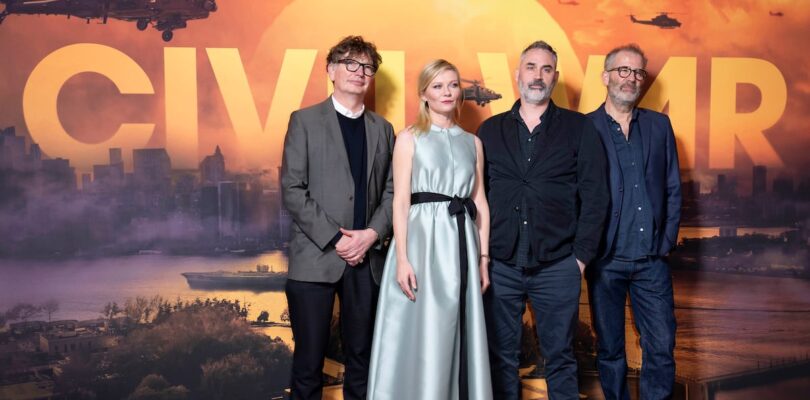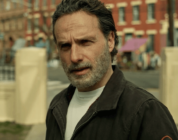I expected to hate “Civil War” based on what little I had heard about the premise — the United States of America has split into two factions who are at war with each other. I assumed the movie would be an overwrought, sanctimonious exploration of how the militant politics of people on one side might cause an irreparable division in our nation, and how the heroes on the other side might defeat their opponents and restore peace and order.
So, I was both surprised and relieved to find that the film spends no time explaining the origin of the conflict or the motivations of the two sides. It doesn’t really delineate who is on which side and what political ideologies the two sides hold.
By leaving much of its story unexplained, the film leaves a lot to interpretation. Instead of telling us what is right and what is wrong in our modern political discourse, thereby adding fuel to our current political fire, the film’s writer and director, Alex Garland, asks us to question how our staunchly held beliefs might, if left unexamined, lead to as dire an outcome as the events of his film.
“Civil War” begins amid the conflict. Texas and California have seceded and joined forces as “the Western front,” and they are trying to overthrow the government. By uniting red Texas and blue California, Garland makes clear that he’s not going draw a direct comparison to any political battles currently going on.
The main characters are a team of journalists on their way to Washington, D.C. in a Ford Expedition. Lee, played by Kirsten Dunst, is a photojournalist, and Joel, played by Wagner Moura, is a reporter. Together, they are traveling from New York to the White House to try and get an interview with the president. Tagging along are a veteran New York Times reporter, Sammy, played by Stephen McKinley Henderson, and Jessie, a young photographer, played by Cailee Spaeny.
The group travels through Eastern states, which are strewn with abandoned cars and rubble from blown-out buildings. They stop to sleep, refuel and occasionally embed with fighters. Each of these stops delivers scenes in which the characters confront the brutality of the conflict, and each of these scenes are terrifying. The most effective scene during the journey features Dunst’s real-life husband, Jesse Plemons, who is almost too convincing in his portrayal of a rogue mercenary executing civilians en masse and disposing of the bodies in a mass grave.
The movie is rated R for language and extreme violence. This is, after all, a war movie, and never shies away from showing what it really looks like when a human being is killed in battle. Blood and gore abound, as does the profanity one might use when being targeted by a sniper or tortured in an abandoned car wash — two of the more brutal scenes in the film.
The journalists ultimately arrive in Washington, D.C., where Western Front rebels have besieged all three branches of government and are planning to assassinate the president. The final act of the film takes place in the White House and is so gripping that I was literally sitting on the edge of my seat.
“Civil War” is a very compelling one hour and 47 minutes. However, not everything about “Civil War” is successful, as is often the case with big-swing movies. The script and its moments of exposition could have benefited from less telling and more showing. There’s an eye-rolling scene where Lee tries on a dress in a shop, and in doing so is reminded she’s beautiful. The conversations about the ethics of journalism felt cliched and tired (though that could be a personal bias).
But the biggest criticism I’ve read of the film is what I believe is its strength. Namely, it’s not explicitly clear what message “Civil War” is trying to deliver. It does not exist to reaffirm anyone’s biases or politics. Instead, the film reflects our own biases and politics back at us and asks us to assess if they are pushing us closer to union or division.
Garland said as much in an interview with Sean Fennessey on “The Big Picture” podcast.
“The movie is non-biased inasmuch as it just offers up events during a window of time,” he said. “It’s not sticking flags all over the place saying here is the intention, here’s the opinion, here’s all the sort of reassurances that audiences sometimes want, but also filmmakers sometimes want in order that they reassure themselves about themselves, as well as reassuring the audience so that the choir they’re preaching to knows, yes, we’re all in the same choir.”
I was not surprised to learn that Garland wrote “28 Days Later,” a film about a zombie outbreak. “Civil War” more closely resembles a horror movie than a political thriller, with two major exceptions: rather than fleeing danger, the characters pursue it, and the monsters are people of sound mind and body — it’s not any sort of infectious virus that has caused them to turn on each other. It’s political extremism.
These two questions seem to me like the two big ideas with which the film wrestles — the dangers of glorifying violence, the dangers of extremism and the danger of mixing the two.
The term “civil war” often crops up in our current political discourse, spoken with a certain excitement and anticipation of one righteous side heroically defeating the erroneous one. “Civil War,” the movie, serves as a solemn reminder that war is mostly terror and devastation.
While the movie leaves much up to interpretation and asks more questions than it answers, Garland was unequivocal when he told Fennessey, “Extremism encourages extremism, and extremism is dangerous. It’s not abstractly dangerous. It’s dangerous in a really concrete, serious way and also in a radiating way. I think it leads to real-world horror.”
Real-world horror is what I felt watching “Civil War.” I left the theater with a resolved commitment to scrutinize my own occasionally militant beliefs, and assess how we as a nation can better avoid that horror.





